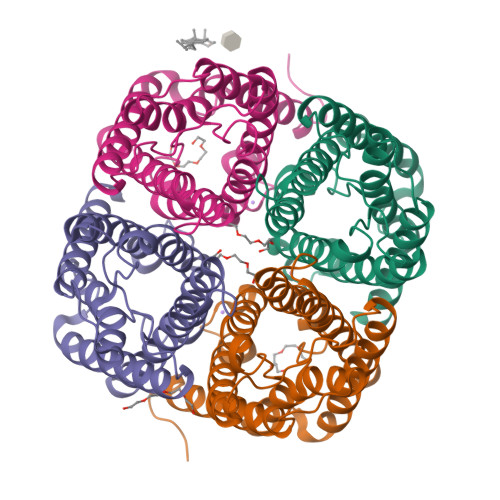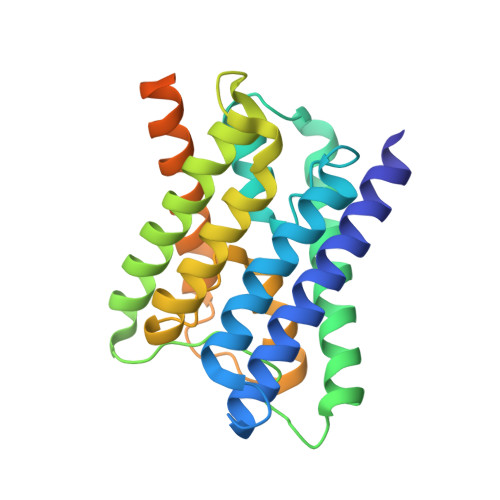Structural basis for high selectivity of a rice silicon channel Lsi1.
Saitoh, Y., Mitani-Ueno, N., Saito, K., Matsuki, K., Huang, S., Yang, L., Yamaji, N., Ishikita, H., Shen, J.R., Ma, J.F., Suga, M.(2021) Nat Commun 12: 6236-6236
- PubMed: 34716344
- DOI: https://doi.org/10.1038/s41467-021-26535-x
- Primary Citation of Related Structures:
7CJS - PubMed Abstract:
Silicon (Si), the most abundant mineral element in the earth's crust, is taken up by plant roots in the form of silicic acid through Low silicon rice 1 (Lsi1). Lsi1 belongs to the Nodulin 26-like intrinsic protein subfamily in aquaporin and shows high selectivity for silicic acid. To uncover the structural basis for this high selectivity, here we show the crystal structure of the rice Lsi1 at a resolution of 1.8 Å. The structure reveals transmembrane helical orientations different from other aquaporins, characterized by a unique, widely opened, and hydrophilic selectivity filter (SF) composed of five residues. Our structural, functional, and theoretical investigations provide a solid structural basis for the Si uptake mechanism in plants, which will contribute to secure and sustainable rice production by manipulating Lsi1 selectivity for different metalloids.
Organizational Affiliation:
Research Institute for Interdisciplinary Science, Okayama University, Tsushima Naka 3-1-1, Kita, Okayama, 700-8530, Japan.























